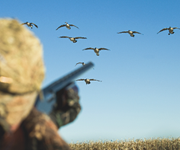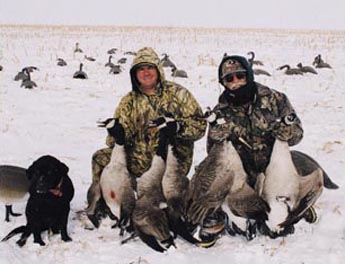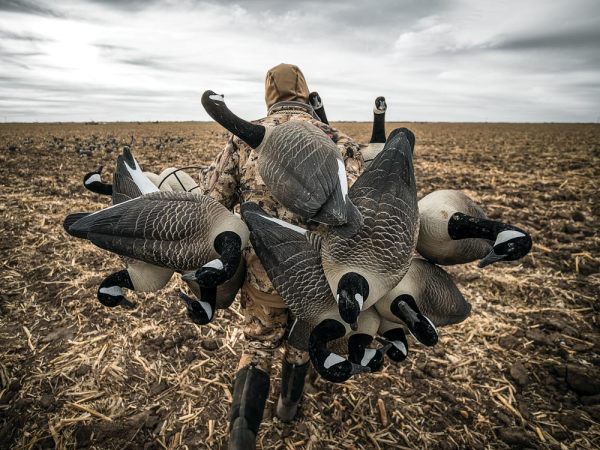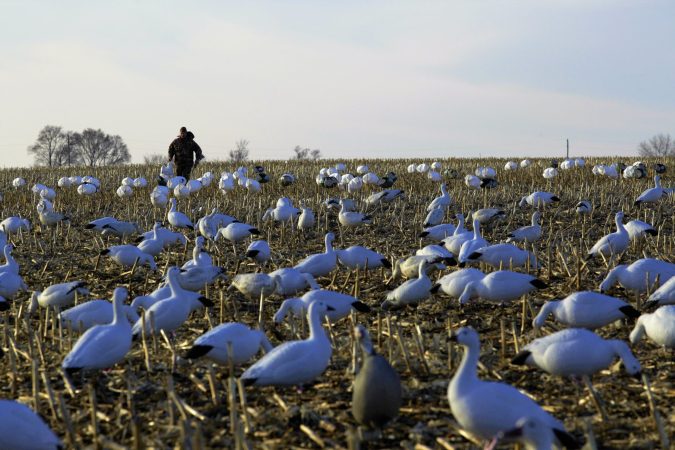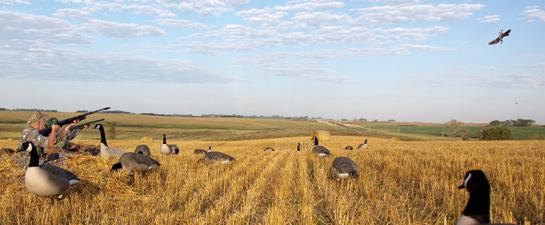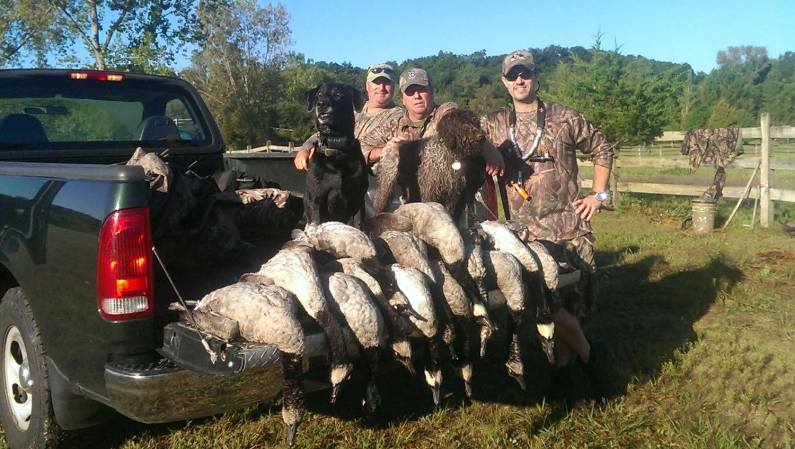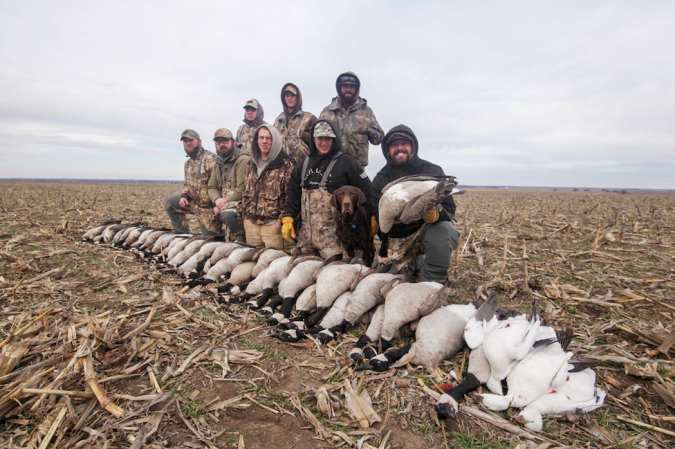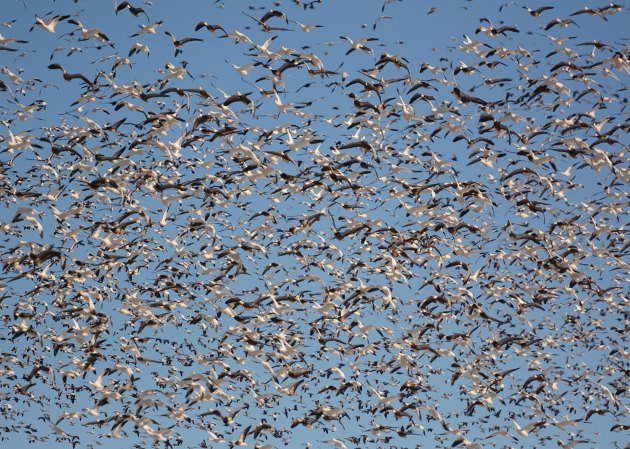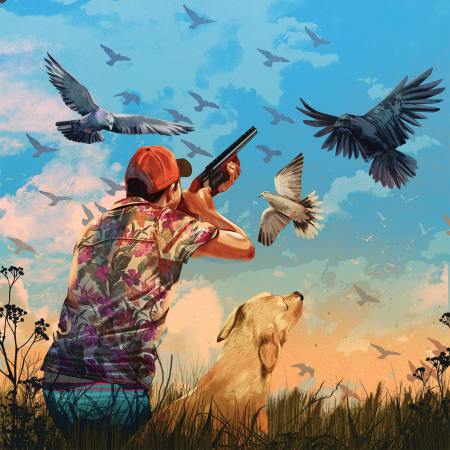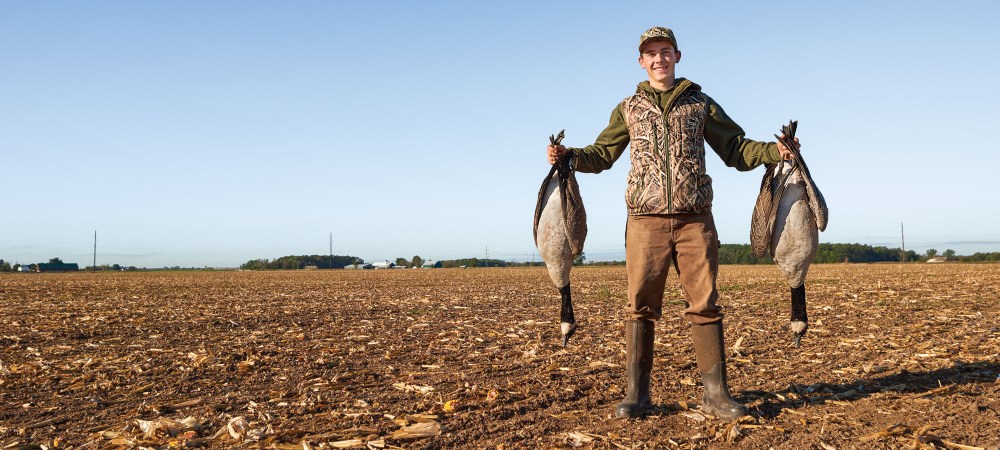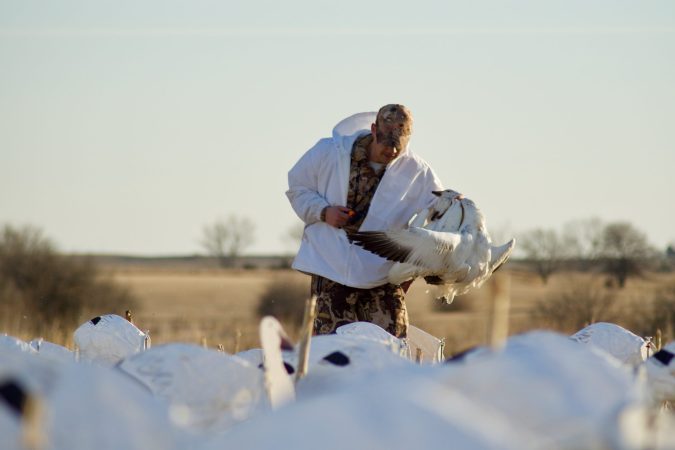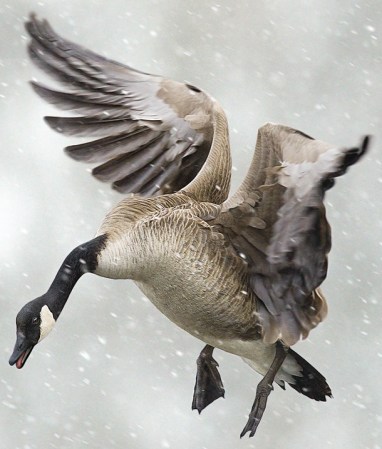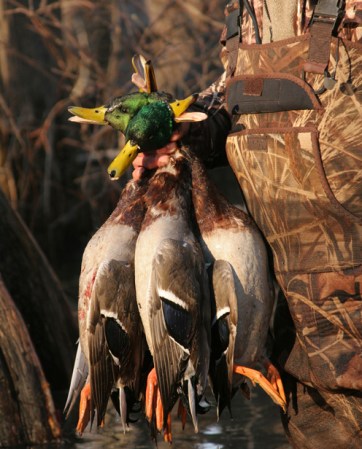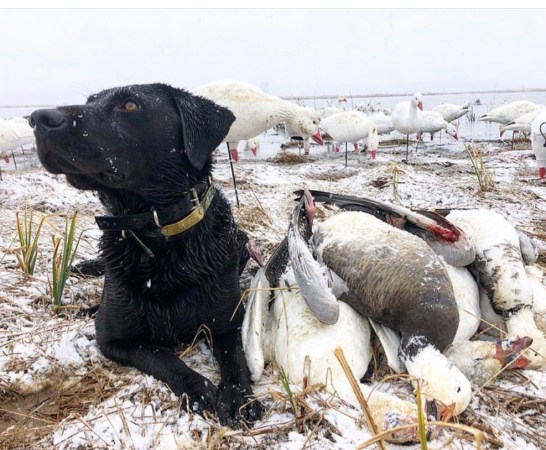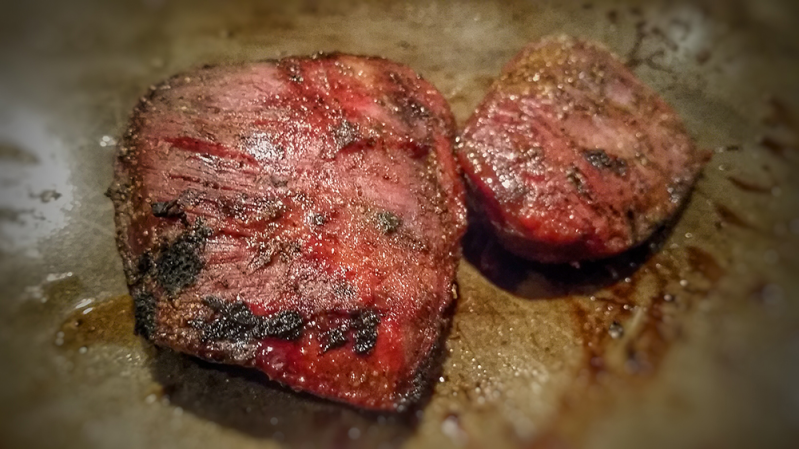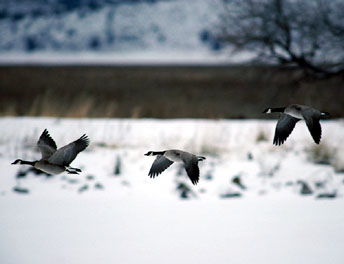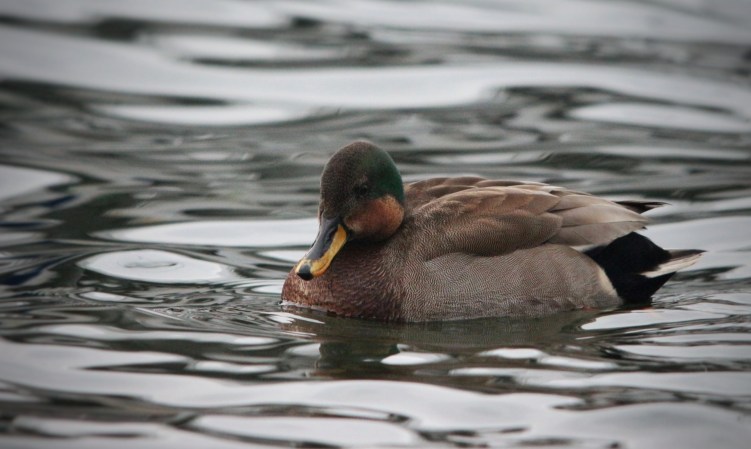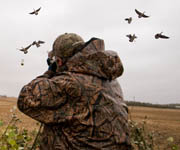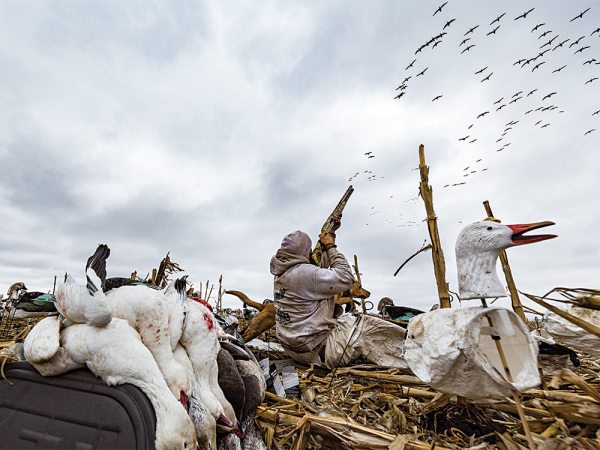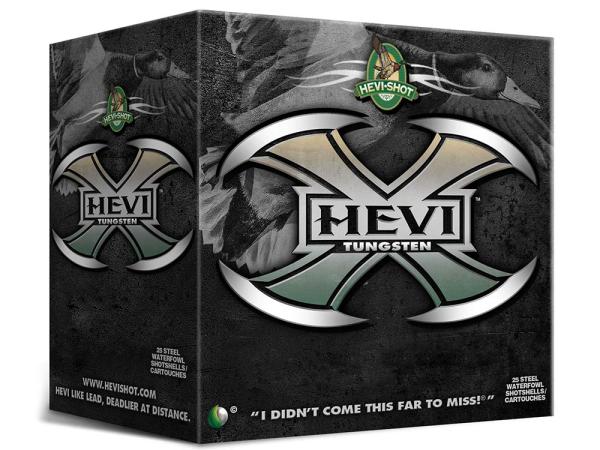I called to the distant geese, pleading for them to come in for a closer look. Ron Latschaw, a former owner of Final Approach, kept busy wildly flapping a flag through the slit in his blind. Our calling and flagging reached out to assure the Canadas that our field was the best place to feed. With wings cupped, though not totally committed, the leader of the flock craned his neck, analyzing our spread. What had started as a small speck on the horizon now hovered 200 yards above us, waiting to hear just the right sounds before he and his spooky group of feathered friends committed to landing.
Sinking deeper into my blind to hide from the prying eyes, I couldn’t help but chuckle at my predicament. I had traveled a long way to hunt ultra-wary geese along Idaho’s Snake River. Back home in Massachusetts the resident goose season had just started. Several hundred untouched Canadas would have been more than happy to keep my shotgun barrels warm. But here I was gunning a challenge, and loving it.
Trying to further entice the flock leader, we changed from aggressive calling to contented clucks and low murmurs. Turning, two out of the group of ten birds dropped their feet and coasted in for a landing as the rest of the flock flew away from the spread.
“Take ’em!” Ron cried out. I came up with my shotgun at my shoulder and sent a load of steel BBs toward the surprised gander that was now wildly trying to backpedal from a bad decision. The goose came down with a satisfying thump. Ron dropped the other as it attempted a hasty retreat.
SCOUTING IS KEY
With geese as spooky as these, we couldn’t afford to pass up any birds that came into range. Every shot had to count. Ron had scouted the area we were hunting and it paid off.
The day he picked me up at the airport we found about 600 geese feeding along a snow-covered alfalfa farm. “If we’re smart about what we’re doing here, we can get a couple of days shooting,” Ron blurted out like an excited kid as he spied the feeding geese through his binocular.
The next morning, an hour before sunrise, the east winds made the 10-degree temperature seem quite a bit colder. But we kept warm while setting out four dozen decoys and the blinds.
I paid close attention to Ron’s setup. The most noticeable thing was the painstaking way he camouflaged the blinds. They were draped with a white “snow” covering. He added grass to further match the surrounding area.
Once satisfied with the blinds, Ron turned his attention to the decoys. When he was done the setup resembled a butterfly, with the blinds representing the body area and the decoys fanned out to either side like wings. He also placed a set of sentries outside of the rig and some near the blinds to further break up their outlines.
The geese we were hunting that morning were to come from the Minidoka National Wildlife Refuge, three miles to the north. Minidoka is a favorite staging area for geese migrating south from Montana. With miles of farmland for the geese to choose from, scouting is essential. “You can’t just go and set up anywhere,” Ron says.
After harvesting the two wary geese, we looked toward the refuge and could see geese coming out in steady groups. Big flocks, small flocks, even the singles that came near our field flew high and passed on by.
“I hope they’re not migrating–they’re a mile high and heading south.” Ron said. It was time to call it a day and go scout for a new spot.
WHAT BROWN DID FOR US
After lunch, we drove for miles looking for flying or feeding geese without much success, until we came upon a UPS driver who said he’d seen a big bunch of geese on his route about five miles back. We were in business again.
Sure enough, after following the delivery man’s directions, we found hundreds of feeding geese. After some investigative work we tracked down the landowner, who gladly let us hunt his field. We spent the last few minutes of daylight happily watching to see in which direction the geese flew to roost. Our cheerful mood was dashed when a truck pulled up next to us. The driver was a member of a large group of local hunters who were also planning to hunt the field the next day. We knew it was too good to be true.
Not wanting to encounter any problems the following morning, Ron approached the group leader and explained our situation. “How about getting together and combining our efforts tomorrow?” Ron asked, putting on the charm. After a 20-minute talk we were invited to hunt with the group.
WESTERN HOSPITALITY
A fresh covering of snow and great anticipation greeted us the next morning. Hunting with people you don’t know can be a challenge; all we could do was hope for the best. Arriving at the wheat field, we came upon a convoy of two trucks pulling trailers full of dozens of decoys and several laydown blinds. These guys were serious about their goose hunting. As the northeast wind made the 12-degree weather feel that much colder, we all gathered for a quick strategy meeting.
With eight hunters and three Labs to hide, we decided to hunt the edges of the draw surrounding the wheat field. Although it wasn’t the exact spot where we had spied the geese the day before, our new hunting partners felt the geese would fly past their feeding grounds and land next to our decoys. Who could argue, especially after they informed us that they had limited out doing the same thing the day before? At daybreak, the geese came. Actually, they never stopped coming. After we all had limited out and started picking up the decoys, the geese continued to come from the north.
Looking out over the rolling hills, I thought about how different goose hunting was in Idaho compared to back East. Hunting near the famed Snake River and pursuing challenging geese made the trip memorable. That local waterfowlers invited us to hunt with them was a bonus, and it spoke volumes about the sportsmanship prevalent in Western outdoorsmen.

